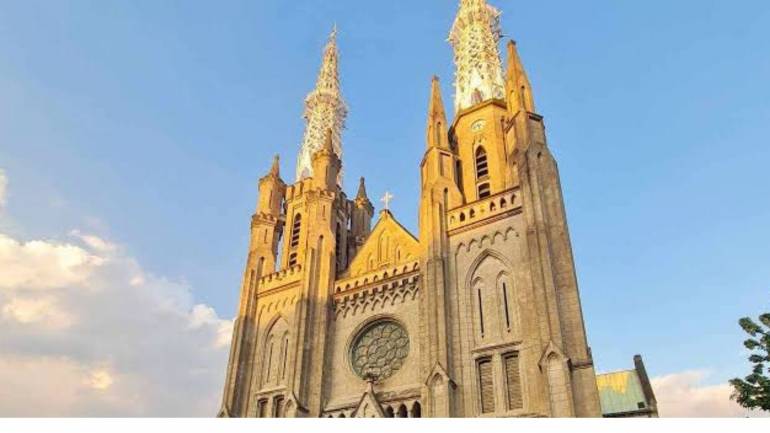Jakarta Cathedral: A Neo-Gothic Gem in Indonesia

The cathedral's three iron spires, tolerance for Catholic symbols in a predominantly Muslim country, and harmonious relationship with the nearby Istiglal Mosque highlight Indonesia's cultural and religious respect.
The Church of Our Lady of the Assumption in Jakarta, Indonesia, is a stunning neo-Gothic masterpiece that stands as a testament to faith, architecture, and art.
Constructed with bricks covered in plaster and a teak wood roof, this tropical hardwood is commonly used in boats, outdoor structures, and furniture due to its durability.
The church spans two floors, with the second floor housing the Jakarta Cathedral Museum.
This museum offers a deep dive into the history of faith in Indonesia and serves as a custodian of numerous religious relics.
Its architecture is truly mesmerizing, drawing both local and international tourists who often describe it as "worth the travel" and liken it to a European masterpiece.
The stained glass windows and rich religious history within its walls captivate pilgrims and visitors alike.
The cathedral's three iron spires, tolerance for Catholic symbols in a predominantly Muslim country, and harmonious relationship with the nearby Istiglal Mosque highlight Indonesia's cultural and religious respect.
Two of the spires are 60 meters tall; they stand in front of each side of the portal. The spire on the north side is called Tower of David, the other one on south side is called The Tower of Ivory.
The third spire stands 45 meter tall, located at the roof intersection at the rear. This spire is called The Angelus Dei Tower.
Indonesia is the largest Muslim country. But unlike other Muslim countries, it has tolerance to the display of the cross and other Catholic symbols in the exterior of the cathedral.
Masses are on Sundays, unlike in Catholic churches in other Muslim countries, which are on Fridays.
Built in the neo-Gothic style, the cathedral measures 200 feet in lenght and 33 feet in width. It stands 200 feet high.
It has three altars. The one on the left side is "The Altar of Saint Mary." It was made in 1915.
The one on the right side is "The Altar of Saint Joseph." It was completed in 1922.
The third is the main altar, located in the center. This altar was built in the Netherlands in the 19th century. This altar holds the main cross and the tabernacle.
Iron and wood, which are lighter than stone masonry, were used in the construction since Indonesia is prone to earthquake.
The cathedral was built right across the Istigla Mosque, which is Jakarta's largest mosque. This demonstrates the Indonesians' respect to religions and cultures.
The cathedral and the mosque co-exist in peace, harmony, and cooperation.
The cathedral offers its parking lot to the worshippers in the mosque during religious observances, like Eid prayers. On the other hand, the mosque offers its parking lot to the Catholics during big obserances, like Christmas mass.
This church was built on the same site where the old cathedral was erected in 1829.
Since the Dutch were Protestants, they hampered the rise of Catholicism in the East Indies. The old cathedral was not maintained. It collapsed in 1890.
Catholic faith in Indonesia started to spread again after Napoleon Bonaparte put his brother Louis to govern the Dutch.
The new cathedral's groundbreaking was done in 1891. Its construction was completed in 1901.
It is located near Merdeka Square, which is several times bigger than Tiananmen Square; and Merdeka Palace.
Merdeka in the Indonesian language means independence.
At present, the cathedral serves as the seat of the Archbishop of Jakarta, Archbishop Ignatius Suharyo Hardjoatmodjo, continuing its legacy as a beacon of faith and cultural heritage in Indonesia.








